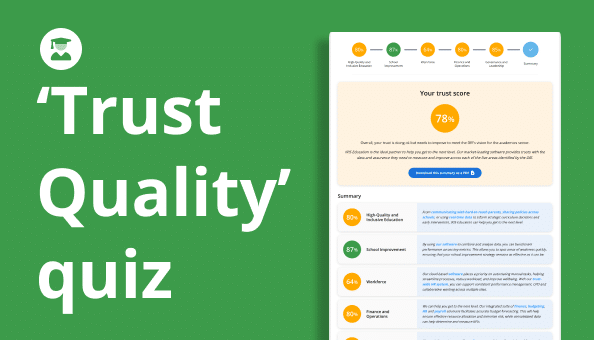BLOGS
Leasing Horror Stories: The Phantom Lease

Despite our best intentions, things do not always go to plan and even industry professionals make mistakes.
In this series of blogs, Innervision takes a look at some of the worst examples of leasing that even the global market-leading companies have fallen victim to and the steps to take to avoid repeating them.
Somewhere in the world, in the not too distant past, there was a very successful company. Everyone knew who they were and they were celebrated for the great service they provided. This company was able to work so well because they leased a large number of their assets. However, everything was soon to change...
For years, the company got their use out of these large units, right up to end of lease, yet, when they went about collecting them all again to return to the lessors, one of the assets was nowhere to be seen.
After a thorough investigation and some much needed organisation, the company and Innervision slowly started to piece together the mystery of the phantom asset...
They still had a lot of issues to deal with and technicalities to discuss, but with Innervision’s help the process was set to be a lot smoother than it had been before.
Leasing can often guarantee the funding of equipment for companies that could not otherwise be attained. However, although you can never have too much of a good thing, you don’t want to bite off more than you can chew. Most blue chip organisations lease hundreds of assets at a time, varying in size and shape and to be sent to offices and warehouses all across the globe. This makes it very difficult to keep track on where everything is, let alone when the instalments need to be paid. Organising your assets is often not as simple as just putting everything into a spreadsheet and it can be very surprising where in the world assets can end up without constant supervision. Here are some tips to ensure you don’t make the same costly mistakes as those in the above example:
- Record Asset Movements – The main problem in the story above was that the company had been moving their assets to be used across their depots without a formal means of recording. Office equipment is very easy to lose track of as things like photocopiers and printers are often treated as part of the furniture, forgetting that they are actually being leased. Similarly, it is just as easy for large assets and fleets of vehicles to go missing if they are being shipped to sites around the world.
Firstly, you should check that you are contractually allowed to move the asset between sites – it’s unlikely that you couldn’t, but always best to check. If you do choose to, it is important to keep track on where the equipment is being moved to, especially if your business is global. Having a set of records readily available saves a great deal of hassle when having to track down a ghostly asset disappearance.
- Organise your Leases into a Portfolio System – As large, multi-national businesses often have a lot of leased assets and agreements floating around their many sites and offices, it is important to make sure that you keep on top of all the paperwork. Innervision’s unique cloud-based software LOIS has made it much easier for its customers to know exactly what they have leased and the deals they have agreed. With New Lease Accounting changes planned to be implemented soon, the International Accounting Standards Board has championed a portfolio approach as the best way to keep on top of your leases.
- Track your Lease Payment Plans Regularly – Not only is it important to know what equipment you are leasing, it is also a good idea to keep track of how long you have had it and how much you are paying. As important as it is to have your agreements organised, you also need to make sure you are aware of where and when your money is going. Leasing can open up a lot of doors for your company’s asset procurement, so don’t let them slam back in your face through bad management!
- Know your Obligations – Most lessors are very agreeable, but even the nicest lessor in the world will charge you a fortune if you fail to stick to the terms of your lease arrangements. By knowing what is required of you during the lease, you avoid being in the vulnerable and undesirable position of having to explain yourself to an angry supplier.
Want to know if your company is starring in its own leasing horror story without you even realising? Organise a pilot with Innervision today and see just how much we can help with your company’s leasing habits.
Many companies trust Innervision to manage their lease portfolios, using its expert advice and specialist knowledge to ensure that they get the best deal and the most out of their leases. Innervision takes pride in its dedication towards cutting down costs and time spent on the often tedious, yet neglected processes of leasing, aiming to truly harness the value of your company’s asset procurement.














